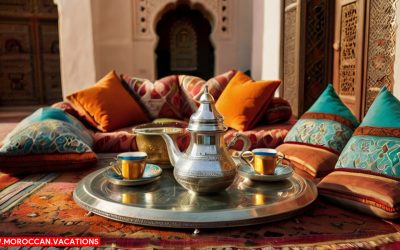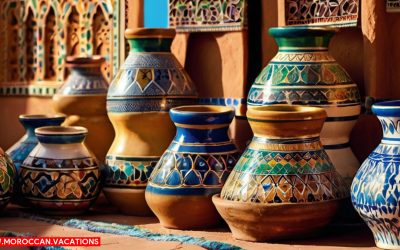Sahara’s Indigenous Craftsmanship
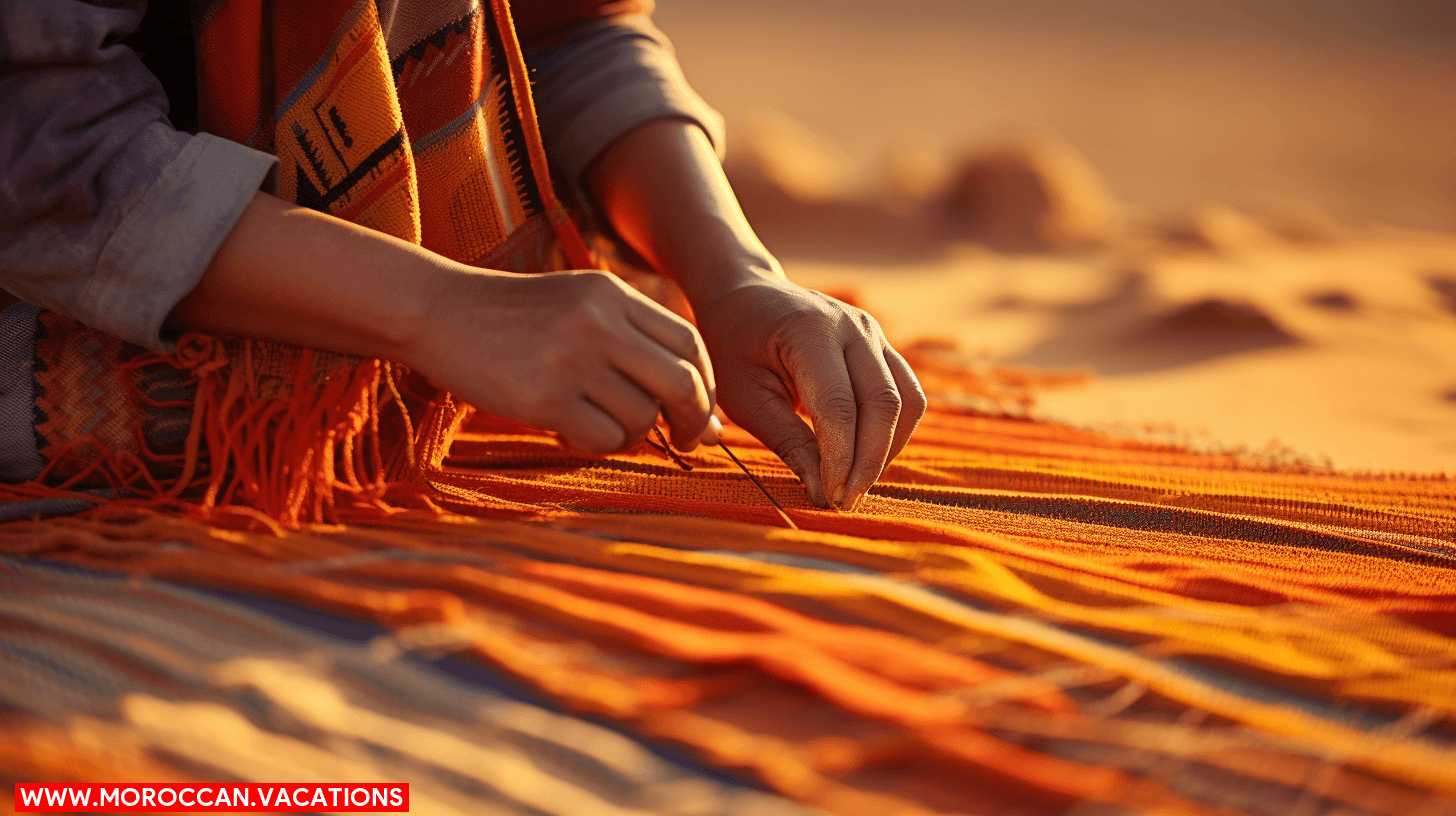

You’re about to embark on an epic journey, diving into the heart of Sahara’s rich indigenous culture. You’ll not just observe, but experience firsthand, the vibrant traditions, languages, and cuisines that make this desert a living tapestry of heritage. This isn’t just an exploration, it’s a deep dive into a world beyond stereotypes. Get ready to challenge your perceptions and uncover the real Sahara. Let’s set off on this adventure together.
You’ll be amazed by Sahara’s indigenous craftsmanship, a vital aspect of their living heritage that brilliantly showcases their centuries-old traditions and skills. These artisans, driven by an unwavering preservation of traditions in Sahara’s cultural heritage, employ age-old techniques to create stunning works of art, from intricate pottery to masterful textile weaving.
The artistry is more than meets the eye; it’s also a form of storytelling in exploring Sahara’s indigenous narratives. Each crafted object narrates a unique tale, revealing a slice of Sahara’s rich history, social norms, or spiritual beliefs. The intricate designs, patterns, and motifs embedded in their craftsmanship are a testament to Sahara’s fascinatingly diversified cultural identity.
This shared craftmanship fosters a strong sense of belonging among native communities. It connects them to their roots, strengthens their cultural pride, and reinforces their identity. This sense of belonging is crucial in a world where the erosion of cultural heritage is a perennial concern.
Freedom seekers like you may find Sahara’s indigenous craftsmanship inspiring. It’s a vibrant testament to the power of preserving tradition, telling stories, and fostering a sense of belonging, all while creating tangible, beautiful artifacts that stand the test of time. It’s an encounter with a living heritage that you wouldn’t want to miss.
Traditional Music and Dance
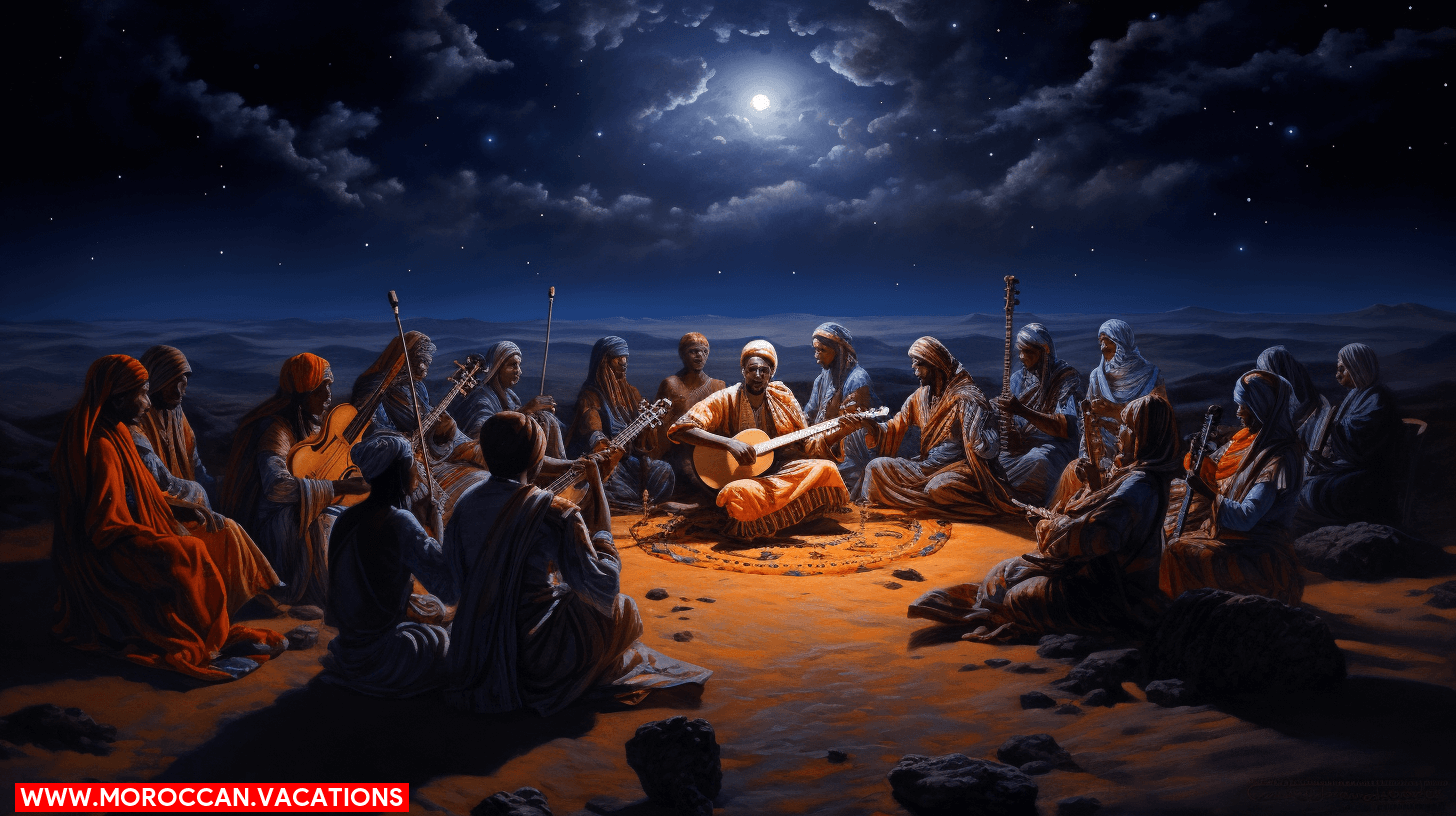

While you might be captivated by Sahara’s indigenous craftsmanship, it’s the traditional music and dance that’ll truly immerse you in their vibrant cultural heritage. These artistic expressions, deeply rooted in ancient customs, are vital for maintaining the Saharan identity and are a testament to the resilience of their culture.
Saharan music isn’t just an auditory experience, it’s a spiritual journey. You’ll find that rhythms, melodies, and lyrics are intricately woven with tales of the desert, embodying the struggles, triumphs, and wisdom of the people. The music is often accompanied by rhythmic clapping or percussion instruments, creating an entrancing atmosphere that invites participation.
Meanwhile, dance serves as a dynamic storytelling medium in the Sahara. It’s a physical representation of their life experiences, history, and beliefs. The energetic movements captivate audiences, while the detailed choreography reflects the nuances of their daily life.
Despite modern influences, these traditions remain resilient, symbolizing the community’s commitment to preserving their cultural heritage. The traditional music and dance of the Sahara aren’t just entertainment, they’re a celebration of freedom, identity, and enduring spirit. So, when you encounter these art forms, you’re not merely observing, you’re participating in a living heritage.
Rituals and Festivals Explored


In the Sahara’s rich tapestry of cultural traditions, your participation doesn’t end with music and dance; it extends to the deeply spiritual and joyous rituals and festivals. They serve as a living reminder of the people’s shared history and communal bonds, opening up avenues for you to explore and understand the Sahara’s indigenous heritage.
- Guérewol Festival: You can’t miss the vibrant, week-long event where young Wodaabe men, adorned in ornate costumes and make-up, participate in traditional dances and songs to attract a wife.
- Imilchil Marriage Festival: It’s a unique opportunity to witness Berber tribes’ ancient custom where women choose their husbands in a mass wedding ceremony, reinforcing the sense of community.
- Mawlid al-Nabi: Experience the deeply ingrained spiritual side of the Sahara. This Islamic holiday celebrates the birth of the Prophet Muhammad with processions, feasts, and recitations.
These rituals and festivals are not mere performances; they’re a testament to the Sahara’s resilient cultural identity, thriving amidst the shifting sands of time. They reveal a collective longing for freedom, unity, and continuity, deeply woven into the cultural fabric of the Sahara’s indigenous people. By partaking in these celebrations, you’re not just observing, you’re living the heritage.
Sahara’s Indigenous Languages
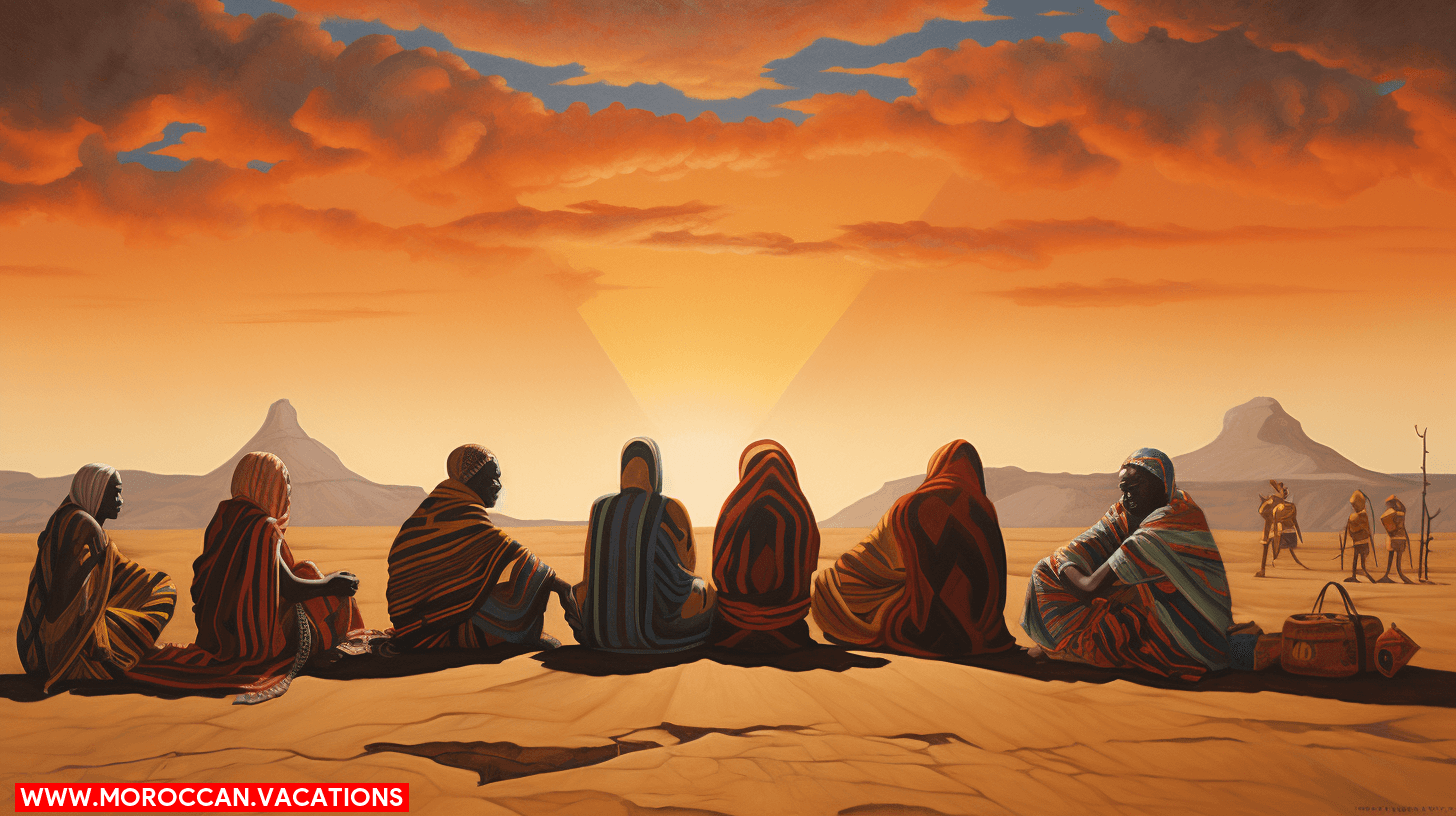

Diving deeper into Sahara’s indigenous culture, you’ll find that the languages spoken are just as diverse and captivating as the rituals and festivals. You’ll hear the melodic tones of Berber, the lingua franca of the Sahara, spoken by many nomadic tribes. Then, there’s the robust Hausa, primarily used in Saharan trade routes, bearing witness to the region’s vibrant commerce through the centuries.
Tamacheq, the language of the Tuareg people, is another linguistic jewel. Its unique script, Tifinagh, is a testament to the Tuareg’s cultural resilience amidst the desert’s harsh conditions. You’ll also encounter Songhai, widely spoken along the Niger River, reflecting the fluidity of Saharan life.
Yet, these languages are under threat. Modernization and dominant global languages are encroaching on their existence. Therefore, it’s crucial to remember that preserving these languages isn’t just about maintaining linguistic diversity. It’s about safeguarding the Sahara’s living heritage, its cultural identity, and the wealth of knowledge embedded in its languages. So, as you traverse the Sahara, listen to its languages, cherish them, and join the fight to preserve these irreplaceable cultural treasures.
Food and Cuisine Traditions
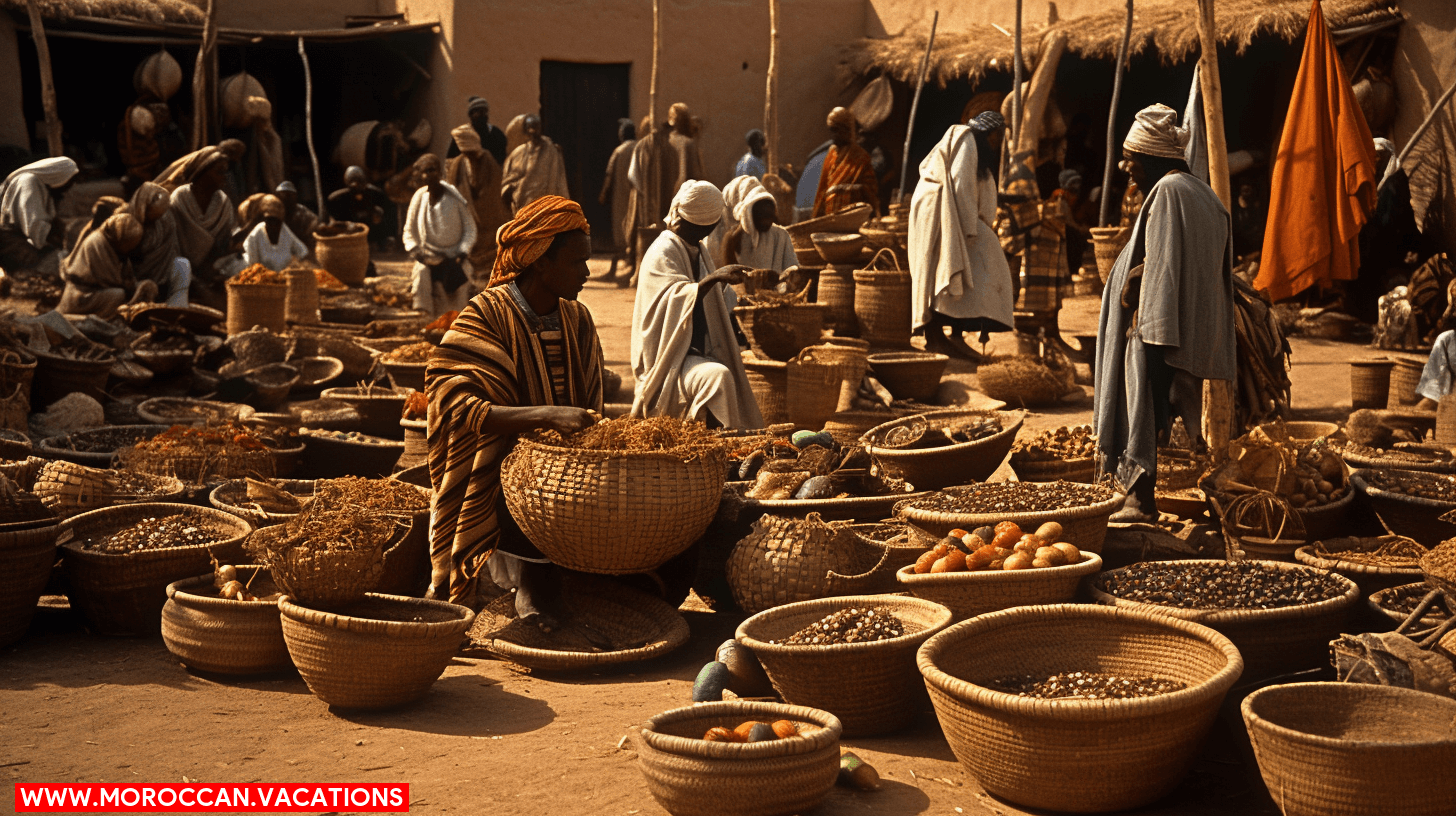

Exploring Sahara’s indigenous culture, you’ll discover a rich tapestry of food and cuisine traditions that’ll tantalize your taste buds and broaden your culinary horizons. The Saharan people’s culinary arts mirror not only their cultural diversity but also their adaptation to the harsh desert climate.
- Taguella: This is a type of bread made from millet or wheat flour. It’s baked under the sand, giving it a unique taste and texture. This traditional bread forms the staple of the Saharan diet, it’s versatile and can be served with various dishes.
- Mechoui: A traditional dish often served at celebrations, Mechoui is a whole lamb or sheep spit-roasted over an open fire. The meat becomes tender, succulent, and imbued with a smoky flavor that’s distinct to this cooking method.
- Dates and Milk: A simple yet satisfying dessert or snack, dates and milk play a significant role in the Saharan diet. Dates provide essential nutrients, while milk, usually from camels or goats, offers a refreshing counterpart.
These culinary traditions are intricately woven into the fabric of the Sahara’s indigenous communities. The food you’ll encounter is not just about sustenance, but a way of expressing heritage, identity, and shared history. Food, in the Sahara, is a celebration of life and community.
Introducing Ayoub Karbachi, a brilliant wordsmith and curator of the Moroccan Vacations website. Prepare to immerse yourself in mesmerizing narratives and extraordinary moments, as he unveils the allure of Morocco's captivating destinations like never before.
Related Articles
Moroccan Tea Culture: The Art of Mint Tea and Socializing
The Origins of Moroccan Tea Imagine yourself sitting in a bustling Moroccan café, the air thick with the aroma of mint tea. The clinking of glasses and laughter fill the air as people gather to socialize and connect over this cherished beverage. Moroccan Tea Culture:...
Marrakesh's Historical Hammams: Bathhouses With Architectural Grace
Origins of Marrakesh's Hammams Imagine stepping into a world of architectural marvels, where ancient traditions and modern luxury intertwine. Welcome to Marrakesh's historical hammams, where the artistry of the past meets the indulgence of the present. In these...
Cultural Experiences: Local Artisans and Their Crafts in Dades Valley
Dades Valley: A Cultural Overview You're about to embark on a vivid journey, exploring the heart of Dades Valley. Here, 60% of residents are skilled artisans. As you wander, you'll feel the pulse of centuries-old traditions alive in their crafts. You're not just...

